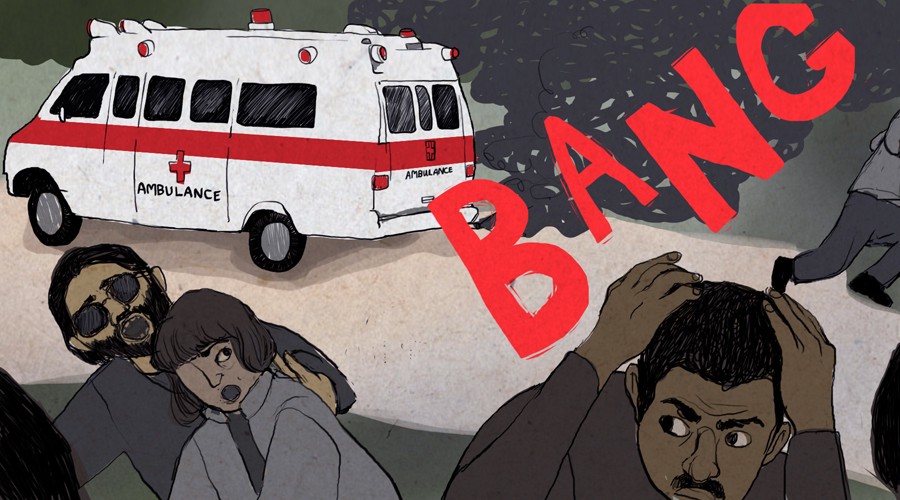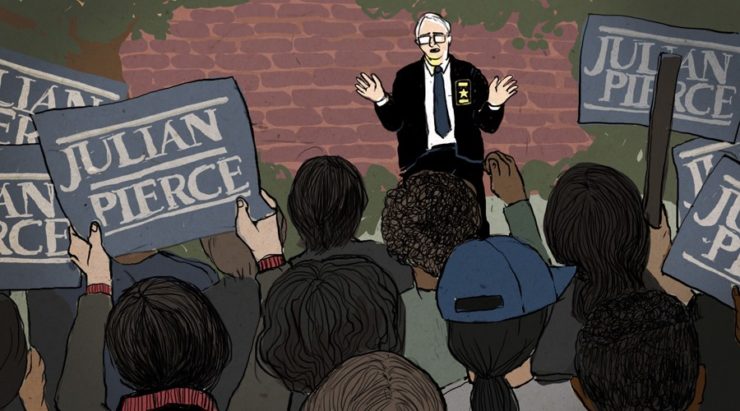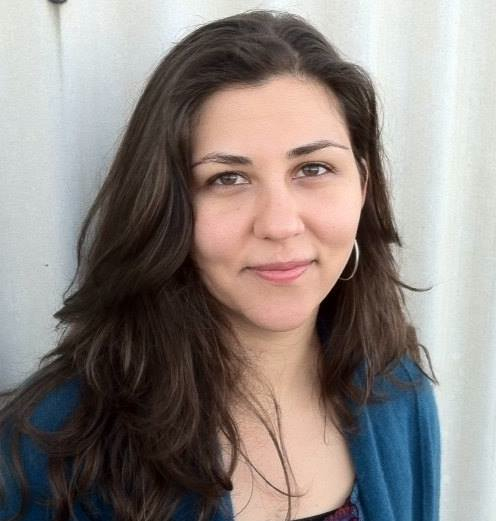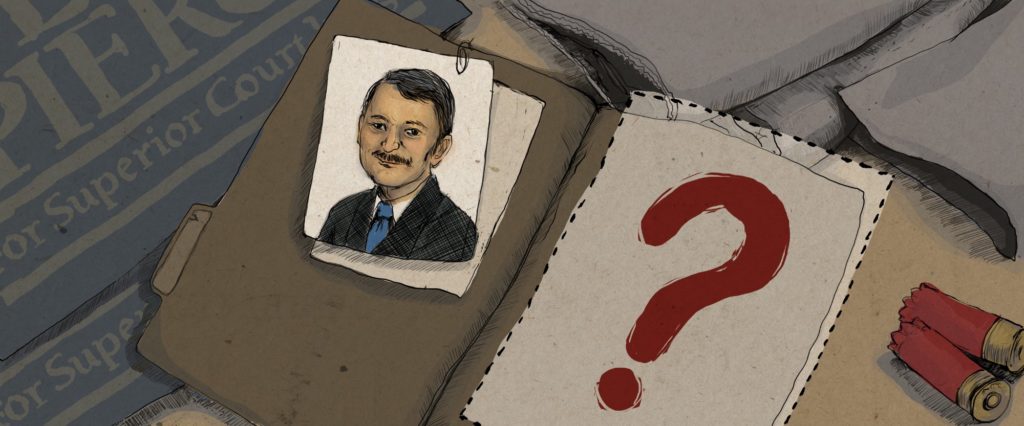
The article “Who Killed Julian Pierce?” was unusual on at least three counts. It was the author’s first magazine story. It took nearly 30 years to write. And it came close to solving a murder.
“I thought a magazine piece would be the same as making a documentary. I couldn’t have been more wrong.”
Nicole Lucas Haimes spends most of her time making documentary films, including “Chicken People,” about competitive show chickens, and “Cracking the Code,” an Emmy-nominated PBS special about the human genome. But she’s never been able to let go of a story she learned about as a young producer at ABC News in 1988. In the magazine In These Times, she read a tiny article about Julian Pierce, a Native American activist in North Carolina who’d been murdered while investigating police participation in cocaine trafficking. He was months away from likely becoming the state’s first Native American Superior Court judge.
The county sheriff claimed that Pierce had been killed by a 24-year-old member of his tribe seeking revenge after being told to stay away from the teenage daughter of Pierce’s girlfriend. After speaking to 120 people over three decades, Haimes discovered there was good reason to doubt the official account.
After first trying to tell the story through a movie and then a book, Haimes finally shared it earlier this year in magazine form, with the online MEL Magazine, a publication aimed at men launched by Dollar Shave Club in 2015 that’s better known for articles like “Trying to Figure Out How Much I’ve Spent on Booze in My Life Is the Stupidest Thing I’ve Ever Done.”
Our conversation is condensed and edited below.
What gripped you about Julian Pierce’s story when you first read about it?
The story fascinated me on a number of levels. I contacted the family right away and immediately sensed the level of fear around the case. I went down to Robeson County in North Carolina for the first time in August 1988. It was a nuanced and complex place, a tri-racial community of whites, blacks and Native Americans. It was the most welcoming place I’d ever been and also the most frightening: It had the highest murder rate in the state and an extremely high rate of unsolved murders. A nonprofit that monitored the county’s courts estimated that 1,000 innocent people were wrongfully convicted every year in the 1980s. The suspicion around the case was intriguing for a budding investigative journalist. I immediately thought, “I know what I’m going to be doing for the next five years — I want to turn this into a movie.”
Why did it take 30 years to finally tell the story, and what kept you pursuing it?
I was able to raise some money to start making a movie. My screenplay was optioned, but the film was never made. At some point, I realized it wasn’t going to get made, at least in the way I envisioned it. I wanted to do something responsible with the information, so in 1998, I campaigned to have the county’s first Native American sheriff reopen the case. He refused. At that point, I figured I’d write a book, but meanwhile I got married and moved to California. It was a major disappointment that I hadn’t done what I thought I would. At that point, I had talked to well over 100 people and had enough information to cast doubt on the official story, but not a working theory of what else might’ve happened.
“My role changed from filmmaker to activist to writer. Is that OK? I don’t know.”
I continued to visit the county and stay close to the Pierce family. Around 2008, I heard a rumor from a confidential source that Dexter Earl Locklear [a drug addict and friend of the county sheriff’s who sometimes volunteered on Pierce’s campaign] broke down while smoking crack and told someone he’d killed Julian Pierce. I went back through my files and realized that there some could be some merit to the rumor. It was like a curtain was lifted. I decided the right thing to do was to try to get the case reopened, but everyone brushed us off. That’s when I decided it was time to get an article written.
I think it became an obsession at some point. If it were true that Julian Pierce was killed because of an alleged conspiracy run out of the sheriff’s department, then it would be a really significant story. Political assassinations are rare. I thought it had the possibility of bringing attention to a person who was a true hero for racial change. I was also a young woman looking for glory.
You got to know Pierce’s family well and actively campaigned to get the case reopened. What are your thoughts about getting so deeply involved considering your role as a journalist and documentarian?
I started out trying to make a movie, but that morphed into an ongoing determination to help bring justice to the case because it was the right thing to do. My role changed from filmmaker to activist to writer. Is that OK? I don’t know. Documentaries are different: It’s such a long process that developing intimacy with your characters is natural. There are facts, but I don’t believe there’s such a thing as true objectivity. What you have to do is be honest about your filters and present the story with integrity. I don’t believe journalists should be propagandists, but you can tell within the first four paragraphs that there’s a point of view.
What did you learn from spending so many years reporting on a Native American community?
Not to have any assumptions and to really, really listen and to be very present. I realized it’s really important to let people tell their stories in as unfiltered a way as possible.
 What was different about writing a longform narrative compared to making a documentary?
What was different about writing a longform narrative compared to making a documentary?
I thought a magazine piece would be the same as making a documentary. I couldn’t have been more wrong. I figured I could write the story and then pop in the quotes I wanted, which is how I approach film, but that didn’t work. I thought it would be simple to structure something I knew so intimately, but it was a nightmare. There’s a level of visual detail film encodes: You see the food on the table, the drawn curtains, the smoke in the air. There’s no room to describe all of that in writing. It wasn’t enough to follow a character’s arc; a longform story required following an intellectual line of reasoning. The advantage is that the storytelling is concise and rigorous. Every word had to have meaning, which forced me to more concentrated than a documentary, where there’s room for other kinds of exploration.
Why did you end up publishing this in MEL Magazine, a new online publication sponsored by a shaving products company? What it was like to write for them?
Full disclosure: Zak Stone, the magazine’s executive editor, is a cousin. I didn’t know him very well, but he knew about this project. I reconnected with him when I was trying to pitch the story and he suggested people to pitch, but it came to naught. Then he got hired at MEL. He has a vision of making it truly a classic men’s magazine in the mold of Playboy, a mix of racy and serious. The editors were very supportive as I was learning to work in print and brought all the journalistic rigor I would expect from any publication. There was extraordinarily thorough fact-checking and legal review.
What did it feel like to finally get the story out there?
It’s unbelievably satisfying and such a relief. Now other reporters in North Carolina are picking up the story, and I’m so happy about that. I’m still working on a book that’s partly a memoir about my obsession with this case and partly Julian’s story. The Pierce family and the Robeson-based Center for Community Action are starting a postcard and letter-writing campaign to keep up pressure on Governor Roy Cooper to reopen the case. I don’t think it’s done yet.



